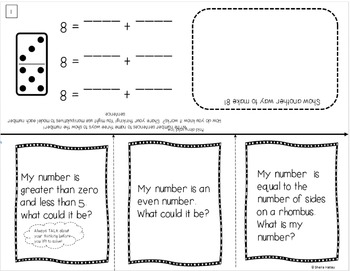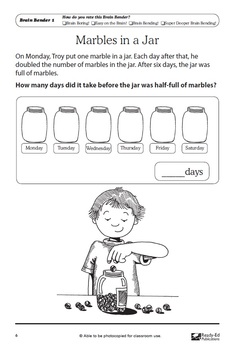Problem Solving
By Dr. Eugene Maier
Every now and then math makes the headlines of the local paper, as it did a couple of weeks ago. 'Answers to math puzzlers add up to millions' announced the banner at the top of the page. The story concerned a prize of $1,000,000 being offered by the Clay Mathematics Institute for a solution to any one of seven mathematics problems, considered by mathematicians to be among the most renown unresolved mathematical questions. The list of problems can be found on the internet at www.claymath.org. This site is just one of many where unsolved mathematical problems of current interest may be found. Links to a number of these sites can be found at www.mathsoft.com/asolve.
For the average person, accessing one of these sites won't be very informative, mathematically speaking. The mathematics vocabularies and references to previous results are only intelligible to someone with a working knowledge of the mathematics from which the problem has emerged, although there is an introduction to each of the Clay Math Institute's prize problems that gives the general reader some sense of what the problem is about. Regardless of one's mathematical background, a visit to one of these sites does dispel the notion that mathematics is a dead subject. Quite to the contrary, one sees that there are hundreds of questions that mathematicians are pursuing. And there's no end in sight, each advance in knowledge leads to new theories and conjectures to explore.
That's what mathematics is about. Making conjectures, seeking relationships, validating theories, searching for solutions, verifying results, communicating findings—in short, problem solving. To do mathematics is to solve problems.
Problem solving—at least the phrase—has always been part of school math. Every math textbook series claims to emphasize it and every list of standards gives it special attention. Here in Oregon, the Department of Education's performance assessment in mathematics is a 'problem-solving' test. Passing this test is a requirement for the Certificate of Initial Mastery—concocted as part of the Oregon Educational Act for the 21st Century in hopes of convincing the world that a tenth-grade Oregon education really means something.
However, in contrast to the professional world of mathematics, school mathematics isn't synonymous with problem solving. In school, problem solving is likely to be considered just another topic, along with adding fractions, multiplying decimals, or finding perimeters. And so teachers attempt to teach it like any other topic—which, for many, means 'rule and rote': Here is the procedure to use and here are problems to practice on; you will be expected to remember it and pass a test to show that you have mastered it. Thus, problem solving is reduced to an algorithmic process, typically a list of 'strategies' to try until one finds one that works.
Math-Exercises.com is a collection of math exercises, math problems, math tasks and math examples with correct answers, designed for you to help in preparing for entrance exams to secondary school, college or university. It will help the primary school pupils to prepare for the math tests and final exams as well as the high school students to. Math Problem Solving, Volume 8: 05/05/03 Number 1, Ryan's Class. Math Problem Solving, Volume 7: 03/19/02 Number 3, Easter Egg Hunt. 10/26/01 Number 2, Pumpkin Problems. 10/16/01 Number 1, Halloween Problems. Multiple-Step Word Problems. Word problems where students use reasoning and critical thinking skill to solve each problem. Math Word Problems (Mixed) Mixed word problems (stories) for skills working on subtraction,addition, fractions and more. Math Worksheets - Full Index. A full index of all math worksheets on this site.
Math Problem Solving Example
What I find unfortunate is that the list of strategies almost always begins with 'guess and check' and 'make a table' and, what's more, almost all of the 'problems' assigned yield to these approaches. Thus, students come to equate 'problem solving' with using routine methods that neither develop creativity, provide insight, nor are particularly effective in more complicated situations. It's not likely that one is going to, say, find a formula for the sum of the squares of the first k integers by guessing and checking or making a table.
The emphasis placed on these rudimentary methods create mindsets that are hard to overcome. Creative sb live gameport driver downloads. What happens is similar to what happens when students are taught particular paper-and-pencil algorithms for doing arithmetic. Their capacity for doing mental arithmetic diminishes since paper-and-pencil algorithms don't work well for mental calculations—people who have been drilled on them have difficulty imagining other ways of performing computations. Similarly, as I have found in my teaching, students whose repertoire for solving problems is guess-and-check and make-a-table have difficulty shedding these methods for more creative and productive approaches.


That's what mathematics is about. Making conjectures, seeking relationships, validating theories, searching for solutions, verifying results, communicating findings—in short, problem solving. To do mathematics is to solve problems.
Problem solving—at least the phrase—has always been part of school math. Every math textbook series claims to emphasize it and every list of standards gives it special attention. Here in Oregon, the Department of Education's performance assessment in mathematics is a 'problem-solving' test. Passing this test is a requirement for the Certificate of Initial Mastery—concocted as part of the Oregon Educational Act for the 21st Century in hopes of convincing the world that a tenth-grade Oregon education really means something.
However, in contrast to the professional world of mathematics, school mathematics isn't synonymous with problem solving. In school, problem solving is likely to be considered just another topic, along with adding fractions, multiplying decimals, or finding perimeters. And so teachers attempt to teach it like any other topic—which, for many, means 'rule and rote': Here is the procedure to use and here are problems to practice on; you will be expected to remember it and pass a test to show that you have mastered it. Thus, problem solving is reduced to an algorithmic process, typically a list of 'strategies' to try until one finds one that works.
Math-Exercises.com is a collection of math exercises, math problems, math tasks and math examples with correct answers, designed for you to help in preparing for entrance exams to secondary school, college or university. It will help the primary school pupils to prepare for the math tests and final exams as well as the high school students to. Math Problem Solving, Volume 8: 05/05/03 Number 1, Ryan's Class. Math Problem Solving, Volume 7: 03/19/02 Number 3, Easter Egg Hunt. 10/26/01 Number 2, Pumpkin Problems. 10/16/01 Number 1, Halloween Problems. Multiple-Step Word Problems. Word problems where students use reasoning and critical thinking skill to solve each problem. Math Word Problems (Mixed) Mixed word problems (stories) for skills working on subtraction,addition, fractions and more. Math Worksheets - Full Index. A full index of all math worksheets on this site.
Math Problem Solving Example
What I find unfortunate is that the list of strategies almost always begins with 'guess and check' and 'make a table' and, what's more, almost all of the 'problems' assigned yield to these approaches. Thus, students come to equate 'problem solving' with using routine methods that neither develop creativity, provide insight, nor are particularly effective in more complicated situations. It's not likely that one is going to, say, find a formula for the sum of the squares of the first k integers by guessing and checking or making a table.
The emphasis placed on these rudimentary methods create mindsets that are hard to overcome. Creative sb live gameport driver downloads. What happens is similar to what happens when students are taught particular paper-and-pencil algorithms for doing arithmetic. Their capacity for doing mental arithmetic diminishes since paper-and-pencil algorithms don't work well for mental calculations—people who have been drilled on them have difficulty imagining other ways of performing computations. Similarly, as I have found in my teaching, students whose repertoire for solving problems is guess-and-check and make-a-table have difficulty shedding these methods for more creative and productive approaches.
I suspect our students would be better problems solvers if we would quit treating problem solving as just another mathematics topic to be taught, but rather regard all mathematics as problem solving, and teach it accordingly. Most school math is ancient history—the mathematics that occurs in the curriculum are answers to mathematical questions that were posed years, or even centuries, ago. But these questions are new to our students.
Math Problem Solving Method
Mathematics doesn't have to be taught as a cut-and-dried, here's-how-you-do-it subject. It can be taught in a reflective, inquisitive mode. No matter what the topic, students' perceptions and suggestions can be explored, tested and refined. If every topic were introduced as a problem to be investigated rather than a process to be mastered, there would be no need to treat problem solving as a separate topic with its own set of rules and procedures. Students' ability to solve problems would evolve naturally, hand in hand with their mathematical knowledge and sophistication.
